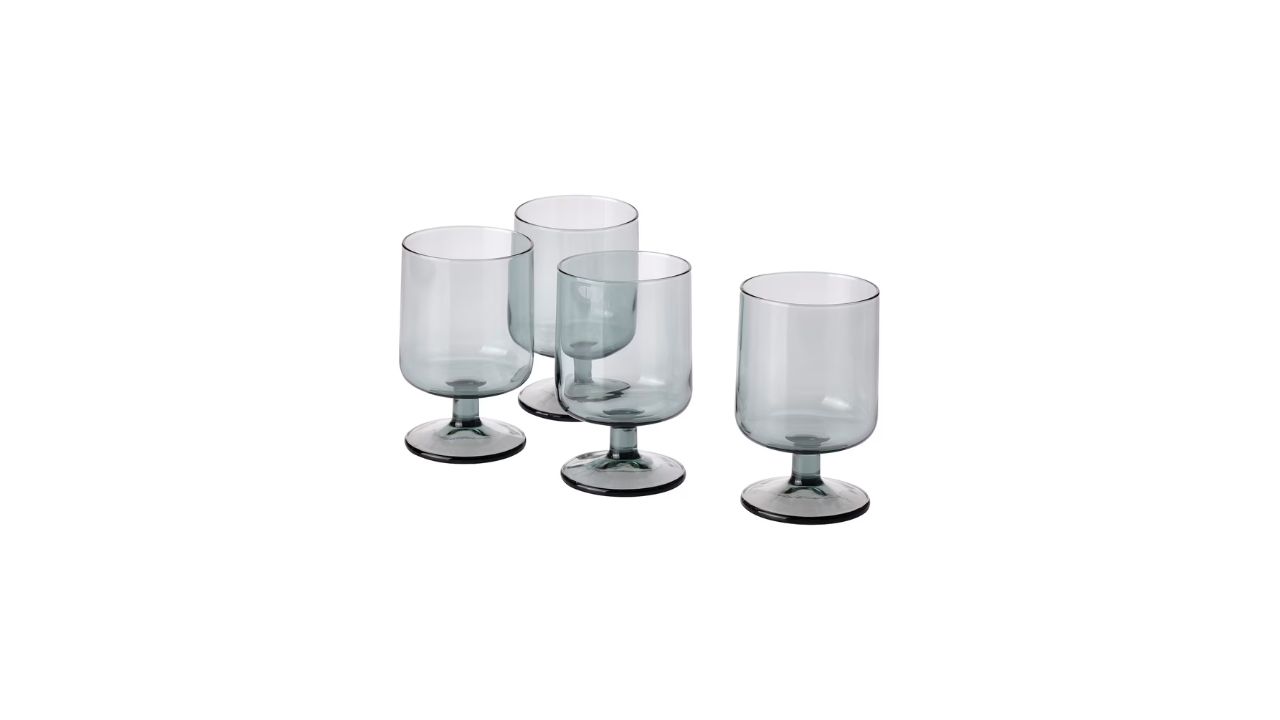Home>Furniture & Design>Interior Design Trends>What Is A Glass Box


Interior Design Trends
What Is A Glass Box
Published: February 7, 2024
Discover the latest interior design trends with our guide to the glass box concept. Explore how this trend is reshaping modern architecture and interior design.
(Many of the links in this article redirect to a specific reviewed product. Your purchase of these products through affiliate links helps to generate commission for Storables.com, at no extra cost. Learn more)
Introduction
The concept of a glass box has transcended its literal meaning to become a metaphor for transparency, openness, and insight. In various domains, the term "glass box" symbolizes a clear and unobstructed view into the inner workings of a system, process, or structure. This metaphorical representation has found relevance in diverse fields, including technology, business, and psychology, where the notion of transparency and visibility holds significant value.
The term "glass box" evokes a sense of clarity and accessibility, contrasting with the opaque and mysterious nature of a "black box." While a black box conceals its internal mechanisms and operations, a glass box offers a transparent view, allowing observers to comprehend the inner workings and intricacies. This distinction underscores the fundamental essence of a glass box: openness and visibility.
In the realm of technology, the concept of a glass box is often associated with software development and testing. It refers to a testing approach where the internal logic, structure, and implementation details of a software application are exposed and accessible to the testing process. This level of transparency enables testers to scrutinize the system's behavior, identify potential issues, and validate the accuracy of its functionality.
Beyond the realm of technology, the notion of a glass box extends to organizational dynamics and decision-making processes. In the context of business, a transparent and inclusive decision-making framework can be likened to a glass box, where stakeholders have visibility into the factors influencing strategic choices and operational directions. This transparency fosters trust, accountability, and collaboration within the organizational ecosystem.
Moreover, the psychological perspective of a glass box delves into the realm of introspection and self-awareness. It represents the ability to gain insight into one's thoughts, emotions, and behavioral patterns, fostering a heightened sense of self-understanding and personal growth. By embracing a glass box mindset, individuals can cultivate transparency in their internal processes, leading to greater clarity and authenticity in their interactions with others.
The multifaceted nature of the glass box concept underscores its pervasive relevance across diverse domains, reflecting the universal value placed on transparency, insight, and understanding. As we delve deeper into the definition, characteristics, and practical applications of the glass box approach, we will unravel its significance and implications in various contexts.
Key Takeaways:
- Embrace the “glass box” mindset for transparency, insight, and collaboration in technology, business, and personal growth. It’s like having a clear view into how things work, fostering trust and informed decision-making.
- The “glass box” approach offers transparency and trust, but may require careful handling to balance complexity and privacy concerns. It empowers stakeholders to navigate complexities with clarity and purpose.
Read also: 13 Amazing Glass Lunch Box for 2024
Definition of a Glass Box
A glass box, in its metaphorical sense, embodies the concept of transparency and visibility. It represents a system, process, or structure that allows observers to gain unobstructed insight into its internal mechanisms, operations, and decision-making processes. This metaphorical representation emphasizes the contrast between opacity and clarity, where a glass box signifies openness and accessibility, in contrast to the concealed nature of a black box.
In the realm of technology, the term "glass box" is often associated with software testing methodologies, particularly the approach known as "glass box testing" or "white box testing." This testing method involves examining the internal logic, structure, and implementation details of a software application to assess its functionality, identify potential vulnerabilities, and ensure comprehensive test coverage. By exposing the inner workings of the software, this approach enables testers to validate the accuracy of the code and uncover potential defects, thereby enhancing the overall quality and reliability of the software.
Beyond the domain of technology, the concept of a glass box extends to organizational dynamics and decision-making processes. In the context of business and management, a transparent and inclusive decision-making framework can be likened to a glass box, where stakeholders have visibility into the factors influencing strategic choices, resource allocation, and operational directions. This transparency fosters trust, accountability, and collaboration within the organizational ecosystem, empowering stakeholders to make informed contributions and understand the rationale behind key decisions.
From a psychological perspective, the notion of a glass box delves into the realm of introspection and self-awareness. It represents the capacity to gain insight into one's thoughts, emotions, and behavioral patterns, fostering a heightened sense of self-understanding and personal growth. By embracing a glass box mindset, individuals can cultivate transparency in their internal processes, leading to greater clarity and authenticity in their interactions with others.
In essence, the concept of a glass box encapsulates the fundamental principles of transparency, visibility, and insight across diverse domains. It serves as a symbolic representation of openness and clarity, emphasizing the value of understanding and accessibility in systems, decision-making processes, and personal introspection. As we explore the characteristics and practical applications of the glass box approach, its significance and implications will become further elucidated.
Characteristics of a Glass Box
The concept of a glass box is characterized by several defining attributes that underscore its symbolic representation of transparency, accessibility, and insight. These characteristics permeate various domains, shaping the way systems, processes, and decision-making frameworks are perceived and understood. By delving into the key traits of a glass box, we can unravel its profound implications and practical significance.
-
Transparency: At the core of the glass box concept lies the principle of transparency. A glass box system or process is designed to provide unobstructed visibility into its internal mechanisms, operations, and decision-making processes. This transparency fosters an environment of openness and accessibility, enabling stakeholders to gain a clear understanding of the factors influencing outcomes and behaviors.
-
Visibility: A fundamental characteristic of a glass box is its emphasis on visibility. Unlike a black box, which conceals its internal workings, a glass box offers observers a clear view into its intricate details. This visibility empowers individuals to comprehend the underlying logic, structure, and dynamics of the system, fostering informed decision-making and comprehensive understanding.
-
Insight: The concept of a glass box is inherently linked to the notion of insight. By providing a transparent view into its inner workings, a glass box facilitates the generation of valuable insights and understanding. This insight enables stakeholders to identify patterns, assess performance, and make informed assessments, thereby enhancing the overall comprehension and effectiveness of the system or process.
-
Accountability: In embracing a glass box approach, accountability becomes a pivotal characteristic. The transparency and visibility offered by a glass box system or decision-making framework promote a culture of accountability, where stakeholders are held responsible for their actions and decisions. This accountability fosters trust, integrity, and ethical conduct within the organizational context.
-
Validation: Another key characteristic of a glass box is its emphasis on validation and scrutiny. In the realm of software testing, the glass box approach enables thorough validation of the internal code, logic, and functionality, ensuring that potential vulnerabilities and defects are identified and addressed. This validation contributes to the overall reliability and robustness of the system.
-
Clarity: The attribute of clarity permeates the essence of a glass box, reflecting the clear and unambiguous nature of its visibility. This clarity enables stakeholders to navigate through the system or process with a profound understanding of its intricacies, fostering effective decision-making, problem-solving, and strategic planning.
-
Collaboration: A glass box environment cultivates a culture of collaboration and inclusivity. By providing visibility into decision-making processes and operational dynamics, a glass box framework encourages stakeholders to contribute insights, perspectives, and expertise, fostering a collaborative ecosystem where collective understanding and shared goals drive progress.
These characteristics collectively define the essence of a glass box, encapsulating the principles of transparency, visibility, insight, accountability, validation, clarity, and collaboration. As we delve into practical examples and applications of the glass box approach, these defining traits will underscore its profound impact across diverse domains.
Examples of Glass Box in Different Fields
The concept of a glass box finds diverse and compelling applications across various fields, reflecting its universal relevance and impact. From technology to business and psychology, the metaphorical representation of a glass box manifests in distinct contexts, shaping the way transparency, insight, and accessibility are embraced. Let's explore compelling examples of the glass box approach in different domains:
Technology: Software Testing and Development
In the realm of software testing and development, the glass box approach is exemplified through white box testing, also known as glass box testing. This methodology involves scrutinizing the internal logic, structure, and implementation details of a software application. By gaining visibility into the code and internal workings, testers can assess the software's functionality, identify potential vulnerabilities, and ensure comprehensive test coverage. This transparent view into the software's internal mechanisms enhances the quality, reliability, and security of the application, exemplifying the principles of a glass box in the technological domain.
Read more: What Is Mattress In A Box
Business and Management: Transparent Decision-Making Processes
In the context of business and management, the concept of a glass box is embodied in transparent decision-making processes. Organizations that embrace a glass box approach to decision-making prioritize openness, inclusivity, and visibility. Stakeholders have insight into the factors influencing strategic choices, resource allocation, and operational directions. This transparency fosters trust, accountability, and collaboration, empowering stakeholders to make informed contributions and understand the rationale behind key decisions. By operating within a glass box framework, businesses cultivate a culture of transparency and integrity, driving sustainable growth and fostering stakeholder engagement.
Psychology: Self-Reflection and Personal Growth
From a psychological perspective, the notion of a glass box resonates with the principles of self-reflection and personal growth. Individuals who adopt a glass box mindset prioritize introspection and transparency in their internal processes. By gaining insight into their thoughts, emotions, and behavioral patterns, they cultivate a heightened sense of self-understanding and authenticity. This introspective clarity fosters personal growth, emotional resilience, and effective interpersonal interactions. Embracing a glass box approach to self-awareness enables individuals to navigate life's complexities with clarity and purpose, fostering holistic well-being and meaningful connections.
Education: Transparent Learning Environments
In the realm of education, the concept of a glass box translates into transparent learning environments that prioritize accessibility and insight. Educators who adopt a glass box approach create inclusive and open spaces where students have visibility into the learning process, instructional strategies, and assessment criteria. This transparency fosters a culture of collaboration, active engagement, and informed learning. Students benefit from a clear understanding of the learning objectives and expectations, empowering them to take ownership of their educational journey and make meaningful contributions within the classroom ecosystem.
Healthcare: Transparent Patient-Centric Care
In healthcare, the glass box approach manifests in patient-centric care models that prioritize transparency and inclusivity. Healthcare providers who embrace a glass box mindset ensure that patients have visibility into their treatment plans, medical decisions, and care pathways. This transparency fosters trust, empowerment, and informed decision-making, enabling patients to actively participate in their health management. By operating within a glass box framework, healthcare professionals cultivate a culture of patient-centered care, where open communication and shared decision-making drive positive health outcomes and holistic well-being.
These examples underscore the pervasive relevance and transformative impact of the glass box approach across diverse fields. By embracing transparency, visibility, and insight, individuals and organizations can foster trust, collaboration, and informed decision-making, driving positive change and sustainable progress in their respective domains.
Read more: What To Do With Boxes
Advantages and Disadvantages of Glass Box Approach
The glass box approach offers a myriad of advantages that underscore its value in fostering transparency, insight, and accountability. However, it also presents certain limitations that warrant consideration in practical applications.
Advantages
-
Transparency and Trust: The foremost advantage of the glass box approach lies in its ability to cultivate transparency and trust within systems, processes, and organizational dynamics. By providing unobstructed visibility into internal mechanisms and decision-making processes, the glass box fosters an environment of openness and accountability, enhancing stakeholder trust and integrity.
-
Enhanced Understanding and Insight: Embracing a glass box approach empowers stakeholders to gain comprehensive understanding and valuable insights into the underlying logic, operations, and dynamics of a system or process. This heightened insight enables informed decision-making, effective problem-solving, and proactive risk management, contributing to overall operational efficiency and strategic alignment.
-
Quality Assurance and Validation: In the realm of software testing and development, the glass box approach, exemplified through white box testing, enables thorough validation of internal code, logic, and functionality. This rigorous validation enhances the quality, reliability, and security of software applications, mitigating potential vulnerabilities and ensuring robust performance.
-
Collaborative Engagement: A glass box framework fosters a culture of collaboration and inclusivity, where stakeholders are empowered to contribute insights, perspectives, and expertise. This collaborative engagement drives innovation, collective problem-solving, and shared ownership, fostering a dynamic ecosystem where diverse perspectives converge to drive progress and sustainable growth.
-
Empowerment and Accountability: By operating within a glass box environment, individuals and organizations embrace a culture of empowerment and accountability. Stakeholders are empowered to make informed contributions and decisions, while being held accountable for their actions and choices. This accountability fosters ethical conduct, responsible leadership, and a sense of ownership, driving positive outcomes and sustainable impact.
Disadvantages
-
Complexity and Overexposure: One of the potential drawbacks of the glass box approach is the risk of overexposure and complexity. In certain contexts, providing excessive visibility into internal processes and decision-making mechanisms may lead to information overload, hindering effective comprehension and decision-making.
-
Resource Intensiveness: The implementation of a glass box framework, particularly in software testing and development, may require significant resources and expertise to ensure thorough validation and comprehensive visibility into the internal workings of the system. This resource intensiveness can pose challenges in terms of time, cost, and specialized skill sets.
-
Privacy and Confidentiality Concerns: In certain scenarios, the transparent nature of a glass box approach may raise privacy and confidentiality concerns, particularly in sensitive decision-making processes and proprietary information. Balancing transparency with the protection of sensitive data and intellectual property requires careful consideration and robust safeguards.
-
Potential Resistance to Change: Embracing a glass box approach may encounter resistance from individuals or organizations accustomed to more opaque or traditional frameworks. Overcoming resistance to transparency and visibility requires effective change management, clear communication, and a gradual transition towards a culture of openness and inclusivity.
-
Vulnerability to Misinterpretation: The transparent nature of a glass box framework may render its internal mechanisms susceptible to misinterpretation or misrepresentation. Stakeholders must exercise diligence in interpreting the insights gained from the glass box approach, ensuring that comprehensive understanding and informed decision-making prevail.
In navigating the advantages and disadvantages of the glass box approach, stakeholders can leverage its transformative potential while mitigating potential limitations. By embracing transparency, insight, and collaboration, the glass box approach can drive positive change, foster trust, and empower stakeholders to navigate complexities with clarity and purpose.
Conclusion
The concept of a glass box transcends its literal representation to embody the principles of transparency, visibility, and insight across diverse domains. From technology to business, psychology, education, and healthcare, the metaphorical essence of a glass box permeates various facets of human endeavor, shaping the way systems, processes, and decision-making frameworks are perceived and navigated. As we conclude our exploration of the glass box approach, its profound implications and transformative potential come to the forefront.
In essence, the glass box approach serves as a catalyst for fostering trust, collaboration, and informed decision-making. By prioritizing transparency and inclusivity, individuals and organizations can cultivate environments where stakeholders are empowered to contribute insights, gain valuable understanding, and drive positive change. The advantages of the glass box approach, including enhanced transparency, collaborative engagement, and accountability, underscore its pivotal role in shaping progressive and sustainable ecosystems.
Moreover, the practical applications of the glass box approach exemplify its universal relevance and transformative impact. From transparent decision-making processes in business to patient-centric care models in healthcare, the glass box approach fosters environments where openness, insight, and inclusivity drive meaningful outcomes and holistic well-being. Embracing a glass box mindset in software testing and development enhances the quality, reliability, and security of applications, contributing to technological advancement and user satisfaction.
While the glass box approach presents certain limitations, such as complexity, resource intensiveness, and privacy concerns, its advantages far outweigh potential drawbacks. By navigating these challenges with strategic foresight and robust safeguards, stakeholders can harness the transformative potential of the glass box approach to drive sustainable progress and positive impact.
In conclusion, the metaphorical representation of a glass box serves as a compelling reminder of the value placed on transparency, insight, and collaboration in shaping inclusive and thriving ecosystems. By embracing the principles of a glass box, individuals and organizations can navigate complexities with clarity, foster trust, and drive meaningful change, ultimately contributing to a more transparent, inclusive, and empowered world.
Frequently Asked Questions about What Is A Glass Box
Was this page helpful?
At Storables.com, we guarantee accurate and reliable information. Our content, validated by Expert Board Contributors, is crafted following stringent Editorial Policies. We're committed to providing you with well-researched, expert-backed insights for all your informational needs.














0 thoughts on “What Is A Glass Box”